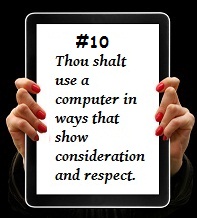The final symposium for the year, and potentially the final symposium for Network Media (emphasis on potentially because I still don’t really understand what’s happening with Media and Communications next year and whether or not subjects will still run).
Adrian spoke a lot about protocols. The difference between technological protocols and social protocols, how they overlap and Tim Berners-Lee’s protocol for the World Wide Web.
Online etiquette was also discussed, yet unfortunately as much as I tried to stay focused my mind started to drift to thinking about other things and what I was having for lunch so I didn’t get much from that discussion.


